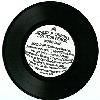 Amidst the flurry of 21st Century Throbbing Gristle activity quietlycomes something new from Genesis P-Orridge. The appearance of this 7"is modest enough—black vinyl with no more than credits on the whitelabel and a see-through sleeve—but what's hidden within the grooves ismuch more colorful. Side A is a collaboration with Carl Abrahamsson andThomas Tibert, now known as Cotton Ferox (formerly known as WhiteStains circa their 1990 collaboration with P-Orridge on At Stockholm).The foundation of "Word Ship" seems to be ethnic percussion loops as anambient haze fills in patches like a fog. Genesis matter-of-factlyanswers his own questions, like "where do you live?," "I travel,""where are you from?," "I just travel," "where were you born?," "I'malways traveling," "what do you do?," "I travel," and finally, "wherewould you be?," "traveling." The track taps the same sort ofpsychedelic dream vibe of Psychic TV's under appreciated Trip Resetalbum from 1996. The "Cosmopolitan Dub" is altogether differentmusically with more sound effects and chorus-effected beats. Side B isby Thee Majesty, GP-O's post-PTV group with Bryin Dall on guitars andLarry Thrasher on percussion and samplers. "Soul Searching" wasrecorded on Alcatraz, oddly enough, and complements the sound of theother side nicely. Genesis recites words in a narcotic deadpan over adirge and deep drum loop reminiscent of PTV's quasi-tribal-technoperiod. What a pleasant surprise. I'm happy to hear Genesis and friendsfurther explore these auras. Side B also includes 23 (of course) lockedgrooves, recycled matter from the songs, by Deftly-D of VoidstarProductions. More blasts from the past are on the way as much ofPsychic TV's back catalog is being reissued by the UK's VoiceprintRecords, beginning in March.
Amidst the flurry of 21st Century Throbbing Gristle activity quietlycomes something new from Genesis P-Orridge. The appearance of this 7"is modest enough—black vinyl with no more than credits on the whitelabel and a see-through sleeve—but what's hidden within the grooves ismuch more colorful. Side A is a collaboration with Carl Abrahamsson andThomas Tibert, now known as Cotton Ferox (formerly known as WhiteStains circa their 1990 collaboration with P-Orridge on At Stockholm).The foundation of "Word Ship" seems to be ethnic percussion loops as anambient haze fills in patches like a fog. Genesis matter-of-factlyanswers his own questions, like "where do you live?," "I travel,""where are you from?," "I just travel," "where were you born?," "I'malways traveling," "what do you do?," "I travel," and finally, "wherewould you be?," "traveling." The track taps the same sort ofpsychedelic dream vibe of Psychic TV's under appreciated Trip Resetalbum from 1996. The "Cosmopolitan Dub" is altogether differentmusically with more sound effects and chorus-effected beats. Side B isby Thee Majesty, GP-O's post-PTV group with Bryin Dall on guitars andLarry Thrasher on percussion and samplers. "Soul Searching" wasrecorded on Alcatraz, oddly enough, and complements the sound of theother side nicely. Genesis recites words in a narcotic deadpan over adirge and deep drum loop reminiscent of PTV's quasi-tribal-technoperiod. What a pleasant surprise. I'm happy to hear Genesis and friendsfurther explore these auras. Side B also includes 23 (of course) lockedgrooves, recycled matter from the songs, by Deftly-D of VoidstarProductions. More blasts from the past are on the way as much ofPsychic TV's back catalog is being reissued by the UK's VoiceprintRecords, beginning in March.
We made it to 700 episodes. While it's not a special episode per se—commemorating this milestone—you can pretty much assume that every episode is special. This one features Mark Spybey & Graham Lewis, Brian Gibson, Sote, Scanner and Neil Leonard, Susumu Yokota, Eleven Pond, Frédéric D. Oberland / Grégory Dargent / Tony Elieh / Wassim Halal, Yellow Swans, Dental waste in Saigon photo by Krisztian. Get involved: subscribe, review, rate, share with your friends, send images! |



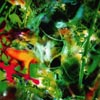 In the 1990s, the Young Gods could have been found releasing albums onsizable international record labels and touring with big acts likeMinistry. Things have been relatively quiet, however, in the last fiveyears for the Swiss-based 21 year old group. Various side projects byAlain Monod as Al Comet and Franz Treichler with Heaven Deconstructionwere indicative of a split, but after recruiting Bernard Trontin ondrums in 1999, the Young Gods began working on this, their sixth studioalbum. Treichler's vocals are more tamed now than before, set against acrystal clear produced version of futuristic space rock. More thanever, the Young Gods sound like The Doors of the space age or apsychedelic version of their fellow countrymen, Yello. Comparisonsalone, however, don't do them justice. The Young Gods explore aslightly creepy, unsettling urban atmosphere. Starting off withstraight-forward drum and bass-influenced electronic rock in"Lucidogen," they get more and more into their own strange breed ofmodern psychedelia. The album builds in a suspense song after songuntil it reaches its peak with "Toi Du Monde," the album's longesttrack. Here, a heavy beat is paired with whispered French and Englishvocals, resulting in a crushing sound with irresistable grooves, andperhaps an attempt for the "Young" Gods not to appear middle-aged, whencompared to the light-hearted instrumental, "Love 2.7." Hopefully,there won't be another 3-4 years until the next album as it seems theYoung Gods have only begun to build up steam again.
In the 1990s, the Young Gods could have been found releasing albums onsizable international record labels and touring with big acts likeMinistry. Things have been relatively quiet, however, in the last fiveyears for the Swiss-based 21 year old group. Various side projects byAlain Monod as Al Comet and Franz Treichler with Heaven Deconstructionwere indicative of a split, but after recruiting Bernard Trontin ondrums in 1999, the Young Gods began working on this, their sixth studioalbum. Treichler's vocals are more tamed now than before, set against acrystal clear produced version of futuristic space rock. More thanever, the Young Gods sound like The Doors of the space age or apsychedelic version of their fellow countrymen, Yello. Comparisonsalone, however, don't do them justice. The Young Gods explore aslightly creepy, unsettling urban atmosphere. Starting off withstraight-forward drum and bass-influenced electronic rock in"Lucidogen," they get more and more into their own strange breed ofmodern psychedelia. The album builds in a suspense song after songuntil it reaches its peak with "Toi Du Monde," the album's longesttrack. Here, a heavy beat is paired with whispered French and Englishvocals, resulting in a crushing sound with irresistable grooves, andperhaps an attempt for the "Young" Gods not to appear middle-aged, whencompared to the light-hearted instrumental, "Love 2.7." Hopefully,there won't be another 3-4 years until the next album as it seems theYoung Gods have only begun to build up steam again. 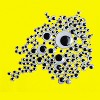 With last year's Octopus Off-Broadway,Parlour showed their rare ability to set your cerebral cortex ablazetrack after track. The album just never let up. In keeping with thistheme, Tim Furnish and Co. release Googler, only nine monthsafter Parlour's debut, not letting fans of the first album catch theircollective breath. From the looks of things, Parlour may be able tokeep up this pace. All of these tracks were recorded three to fiveyears ago, suggesting that this group has a lot of music in the canwaiting merely for polishing and mixing. It's anything but canned,though: Googler is certainly a polished release. Again, Parlouris able to keep me glued to the speakers with infectious grooves andtrippy elements. From the first track, it's almost business as usual on"Jololinine," where interweaved guitar lines and thudding bass lay thegroundwork for percussions, both real and sampled. "Distractor" isalmost a departure, with a workhorse beat and driving energy, driven byan almost manic bassline and steady powerful drums. Then it's back toclassic Parlour: "Over the Under" is the Spider-Man theme of the 21stcentury—an underneath-the-skin builder with great effects and hypnoticrhythm. Parlour just make it all sound so easy. Maybe too easy. Some ofthe same tricks on Octopus are also here, with "Hop Pife,"containing the same eerie effect from the first track on that album butextending it out far further and with greater success. Thus, eventhough you may hear some of the same elements you've heard before, themusic never bores you. "Pife" is one of the album's best tracks, thesoundtrack to any number of my future dreams with no explanation, andalso its longest. The album closer, "Svrendikditement" brings it allhome. Distorted beat samples, keyboard washes, and xylophone make forstrange bedfellows, but it's still utterly compelling. I call it a vastimprovement. The song "Over the Under" is available in its entiretyover at Temporary Residence.com if the 60-second samples below don'tsatisfy.
With last year's Octopus Off-Broadway,Parlour showed their rare ability to set your cerebral cortex ablazetrack after track. The album just never let up. In keeping with thistheme, Tim Furnish and Co. release Googler, only nine monthsafter Parlour's debut, not letting fans of the first album catch theircollective breath. From the looks of things, Parlour may be able tokeep up this pace. All of these tracks were recorded three to fiveyears ago, suggesting that this group has a lot of music in the canwaiting merely for polishing and mixing. It's anything but canned,though: Googler is certainly a polished release. Again, Parlouris able to keep me glued to the speakers with infectious grooves andtrippy elements. From the first track, it's almost business as usual on"Jololinine," where interweaved guitar lines and thudding bass lay thegroundwork for percussions, both real and sampled. "Distractor" isalmost a departure, with a workhorse beat and driving energy, driven byan almost manic bassline and steady powerful drums. Then it's back toclassic Parlour: "Over the Under" is the Spider-Man theme of the 21stcentury—an underneath-the-skin builder with great effects and hypnoticrhythm. Parlour just make it all sound so easy. Maybe too easy. Some ofthe same tricks on Octopus are also here, with "Hop Pife,"containing the same eerie effect from the first track on that album butextending it out far further and with greater success. Thus, eventhough you may hear some of the same elements you've heard before, themusic never bores you. "Pife" is one of the album's best tracks, thesoundtrack to any number of my future dreams with no explanation, andalso its longest. The album closer, "Svrendikditement" brings it allhome. Distorted beat samples, keyboard washes, and xylophone make forstrange bedfellows, but it's still utterly compelling. I call it a vastimprovement. The song "Over the Under" is available in its entiretyover at Temporary Residence.com if the 60-second samples below don'tsatisfy. 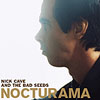 After two excellent albums that marked a daring new direction, it seemsthat Nick Cave has decided to stop and smell the roses. This album ismore a reflection on the twenty years of music he has made with the BadSeeds than it is a step forward. Instead of picking up where 2001's No More Shall We Partleft off, Cave has attempted to craft an album that marries the rawsound of his earlier releases with his more refined recent efforts. Theresult, unfortunately, is a schizophrenic album whose best songs sufferdue to a lack of cohesion.
After two excellent albums that marked a daring new direction, it seemsthat Nick Cave has decided to stop and smell the roses. This album ismore a reflection on the twenty years of music he has made with the BadSeeds than it is a step forward. Instead of picking up where 2001's No More Shall We Partleft off, Cave has attempted to craft an album that marries the rawsound of his earlier releases with his more refined recent efforts. Theresult, unfortunately, is a schizophrenic album whose best songs sufferdue to a lack of cohesion.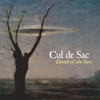 Tradition and innovation are powerful forces, always tugging, tearingat each other, one struggling to hold on, and the other struggling tobreak free. This is a tension observable right now in our culture, asthe means of producing electronic music becomes available to mostanyone with a personal computer and an idea, these new concepts of whatconstitutes artistic expression often clash with established notions ofwhat makes something real or true. These are cultural growing pains, asensation of vertigo that comes with progress and the flexing ofboundaries. On Death of the Sun,Cul de Sac takes both tradition and innovation and uses themingeniously to create harmony from tension. The members of Cul de Sacbegan by assembling a myriad of sources and samples from antique vinylrecords to ambient forest and city soundscapes. These sources were thenelectronically manipulated and modified to serve as a musical spine forthe piece. Throughout the album, fuzzy, distant voices drift inmomentarily amidst clicks and static. The electronic foundation issolid, and its intricacy makes this an amazing headphone listen. Addingeven more layers of complexity, the members of Cul de Sac respond tothis electronic foundation, counter-pointing the synthetic and thetreated with acoustic instruments like violins, guitars, melodicas, anddrums. Their response was not to canned, prepared pieces, but toelectronic sequences that were played live and on the spot duringrecording. On "Dust of Butterflies," a lone acoustic guitar unfolds amusic box melody that itself is sampled and looped over theelectronically modified snapshot of a five-part harmony found on arecord from 1933. "Turok, Son of Stone" consists of a building chorusof primeval percussion that is visceral in its attraction. Thepercussive theme continues through the dark, insistent "Death of theSun," churning dirt and dust before fading away with an aching violin.The final piece, "I Remember Nothing More" samples a minute of an old78-RPM record of Creole songs released in 1940. The singer, AdelaideVan Wey's voice peeks through the tender acoustic guitar, the vinylscratches and fuzz casting her like a faraway, fading transmission. Theeffect is eerie, listening to her soulfulness repurposed in thismanner. The clash between traditional and innovative comes togetherhere, and for a moment, Cul de Sac has made them one concept, oneexpression of clarity. Death of the Sun is a fascinating album,fusing so many seemingly dissonant threads and melding innovative ideasand techniques with traditional sounds and sensibilities.
Tradition and innovation are powerful forces, always tugging, tearingat each other, one struggling to hold on, and the other struggling tobreak free. This is a tension observable right now in our culture, asthe means of producing electronic music becomes available to mostanyone with a personal computer and an idea, these new concepts of whatconstitutes artistic expression often clash with established notions ofwhat makes something real or true. These are cultural growing pains, asensation of vertigo that comes with progress and the flexing ofboundaries. On Death of the Sun,Cul de Sac takes both tradition and innovation and uses themingeniously to create harmony from tension. The members of Cul de Sacbegan by assembling a myriad of sources and samples from antique vinylrecords to ambient forest and city soundscapes. These sources were thenelectronically manipulated and modified to serve as a musical spine forthe piece. Throughout the album, fuzzy, distant voices drift inmomentarily amidst clicks and static. The electronic foundation issolid, and its intricacy makes this an amazing headphone listen. Addingeven more layers of complexity, the members of Cul de Sac respond tothis electronic foundation, counter-pointing the synthetic and thetreated with acoustic instruments like violins, guitars, melodicas, anddrums. Their response was not to canned, prepared pieces, but toelectronic sequences that were played live and on the spot duringrecording. On "Dust of Butterflies," a lone acoustic guitar unfolds amusic box melody that itself is sampled and looped over theelectronically modified snapshot of a five-part harmony found on arecord from 1933. "Turok, Son of Stone" consists of a building chorusof primeval percussion that is visceral in its attraction. Thepercussive theme continues through the dark, insistent "Death of theSun," churning dirt and dust before fading away with an aching violin.The final piece, "I Remember Nothing More" samples a minute of an old78-RPM record of Creole songs released in 1940. The singer, AdelaideVan Wey's voice peeks through the tender acoustic guitar, the vinylscratches and fuzz casting her like a faraway, fading transmission. Theeffect is eerie, listening to her soulfulness repurposed in thismanner. The clash between traditional and innovative comes togetherhere, and for a moment, Cul de Sac has made them one concept, oneexpression of clarity. Death of the Sun is a fascinating album,fusing so many seemingly dissonant threads and melding innovative ideasand techniques with traditional sounds and sensibilities.  While not ground-breaking, this certainly is a fun LP. A decentlyturned out LP is always fun. There's something generous and luxuriousabout them and all the more so in these times of miserable little"jewel cases," measly graphics and microscopic text. The cover of thisLP is satisfyingly nostalgic, looking like a French fusion record fromthe early eighties with, for some reason, a picture of the Osmondfamilly. The inner sleeve is simply delightful - you really have to seeit. If this had been put out on a CD it would seem a scam since it'sonly about 31 minutes long. As for the music, nearly all the elementswe have learned to dread in French music, avant-garde or otherwise,are, if not exactly absent, adequately restrained. Of the star-studdedline up, Jerome Noetinger, Lionel Marchetti and Jean Pallandre arenoted as playing magnétophone à bandes while Marc Pichelin plays synthé analogique and Laurent Sassi handles the enregistrement/mixage (live). It is a fairly chaotic collage of material, sounding sort of like improvised musique concrèteand it's the surprise and contrast of the different material that isthe primary technique. While things eventually get excited enough to benoise art, the starting point is a rather self-concious sound art.There are many references to European music of the 50s and 60s, inparticular the Schaeffer and Henri and the electronic music of Cologneand specifically Kotakte, though I don't think it uses direct quotes.It isn't in bad taste but, frankly, the fashion for this materialbecame tiresome years ago. The sound of variable-speed tape machinesdominate with tapes starting and stopping, rewinding, slowing andaccelerating and the sound of tape being manually yanked through theplayer. In many aspects the music is very familiar but the overallcombination of elements is not and is actually quite fresh and, whilethere's nothing that's truly remarkable or of dazzling brilliance, itis indeed fun.
While not ground-breaking, this certainly is a fun LP. A decentlyturned out LP is always fun. There's something generous and luxuriousabout them and all the more so in these times of miserable little"jewel cases," measly graphics and microscopic text. The cover of thisLP is satisfyingly nostalgic, looking like a French fusion record fromthe early eighties with, for some reason, a picture of the Osmondfamilly. The inner sleeve is simply delightful - you really have to seeit. If this had been put out on a CD it would seem a scam since it'sonly about 31 minutes long. As for the music, nearly all the elementswe have learned to dread in French music, avant-garde or otherwise,are, if not exactly absent, adequately restrained. Of the star-studdedline up, Jerome Noetinger, Lionel Marchetti and Jean Pallandre arenoted as playing magnétophone à bandes while Marc Pichelin plays synthé analogique and Laurent Sassi handles the enregistrement/mixage (live). It is a fairly chaotic collage of material, sounding sort of like improvised musique concrèteand it's the surprise and contrast of the different material that isthe primary technique. While things eventually get excited enough to benoise art, the starting point is a rather self-concious sound art.There are many references to European music of the 50s and 60s, inparticular the Schaeffer and Henri and the electronic music of Cologneand specifically Kotakte, though I don't think it uses direct quotes.It isn't in bad taste but, frankly, the fashion for this materialbecame tiresome years ago. The sound of variable-speed tape machinesdominate with tapes starting and stopping, rewinding, slowing andaccelerating and the sound of tape being manually yanked through theplayer. In many aspects the music is very familiar but the overallcombination of elements is not and is actually quite fresh and, whilethere's nothing that's truly remarkable or of dazzling brilliance, itis indeed fun.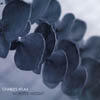 For those of us who do not have our very own lavish, sunlight-flooded house with a private lake in the backyard, the trio of Charles Atlas has captured the all-encompassing scenery, beauty, and fragrant air, and packaged it for our livingrooms and headsets. Once a pet project of Charles Wyatt (former guitarist for Dart and the one who clearly put the "magic" in early Piano Magic recordings), Charles Atlas soon became a fulltime duo with the fulltime involvement of former Rosemarys keyboardist Matt Greenberg. On this, the fourth album, they have expanded to a truly mesmerising ensemble with the addition of Sascha Galvagna.
For those of us who do not have our very own lavish, sunlight-flooded house with a private lake in the backyard, the trio of Charles Atlas has captured the all-encompassing scenery, beauty, and fragrant air, and packaged it for our livingrooms and headsets. Once a pet project of Charles Wyatt (former guitarist for Dart and the one who clearly put the "magic" in early Piano Magic recordings), Charles Atlas soon became a fulltime duo with the fulltime involvement of former Rosemarys keyboardist Matt Greenberg. On this, the fourth album, they have expanded to a truly mesmerising ensemble with the addition of Sascha Galvagna. In 1981, The Clean's "Tally Ho!" single was the second release of the then nascent Flying Nun record label of New Zealand. This fact is largely responsible for establishing The Clean as the archetypes of the New Zealand/Flying Nun sound which sprung up mostly in the 1980's (and has persisted to the present). The sound was poppy, drony, distorted, melodic, tremulous, and brilliant. But as The Clean Anthology proves, the band did not just embrace this school of sound more fully than anyone else: they helped build it.
In 1981, The Clean's "Tally Ho!" single was the second release of the then nascent Flying Nun record label of New Zealand. This fact is largely responsible for establishing The Clean as the archetypes of the New Zealand/Flying Nun sound which sprung up mostly in the 1980's (and has persisted to the present). The sound was poppy, drony, distorted, melodic, tremulous, and brilliant. But as The Clean Anthology proves, the band did not just embrace this school of sound more fully than anyone else: they helped build it. 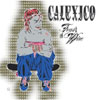 Calexico's lighthearted remix (or rather, remake) of Goldfrapp's"Human" single was my first exposure to the band, and it held a strongappeal to my kitschy desires. So, when presented with their newfull-length, I was expecting a fluffy yet fun slice of indie rock witha twinge of Mexican folk music. What I found instead was an album withan extraordinary blend of depth, humor and beauty for what isessentially an accessible rock album. Does this record make you want toget off your ass and flamenco dance? Absolutely; but it's alsosentimental, even mournful at times. Calexico, while heralding theirsouth-of-the-border aesthetic, don't rely on it as a sole gimmick.Don't get me wrong, that folksy lightheartedness is definitely present:"Sunken Waltz," "Guero Canelo" and "Attack El Robot! Attack!" comecomplete with the festive blaring trumpets and pedal steel and nylonguitars expectant of traditional Latin music. In fact, it is possiblythe band's use of stringed instruments in general that is their forte.The magnificent, melancholy "Black Heart" achieves its effectivenessmostly as a result of the heartbreaking violins. "The Book and theCanal" even recalls the band's Quarterstick labelmates, Rachel's withits somber stringed orchestrations and piano, while "Not Even StevieNicks ..." prevents a lapse into oversentimentalism with a dose ofhumor.
Calexico's lighthearted remix (or rather, remake) of Goldfrapp's"Human" single was my first exposure to the band, and it held a strongappeal to my kitschy desires. So, when presented with their newfull-length, I was expecting a fluffy yet fun slice of indie rock witha twinge of Mexican folk music. What I found instead was an album withan extraordinary blend of depth, humor and beauty for what isessentially an accessible rock album. Does this record make you want toget off your ass and flamenco dance? Absolutely; but it's alsosentimental, even mournful at times. Calexico, while heralding theirsouth-of-the-border aesthetic, don't rely on it as a sole gimmick.Don't get me wrong, that folksy lightheartedness is definitely present:"Sunken Waltz," "Guero Canelo" and "Attack El Robot! Attack!" comecomplete with the festive blaring trumpets and pedal steel and nylonguitars expectant of traditional Latin music. In fact, it is possiblythe band's use of stringed instruments in general that is their forte.The magnificent, melancholy "Black Heart" achieves its effectivenessmostly as a result of the heartbreaking violins. "The Book and theCanal" even recalls the band's Quarterstick labelmates, Rachel's withits somber stringed orchestrations and piano, while "Not Even StevieNicks ..." prevents a lapse into oversentimentalism with a dose ofhumor.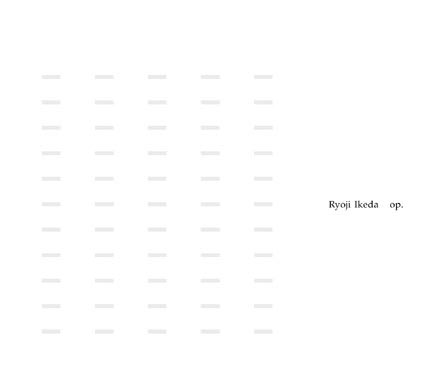 Whether or not Ryoji Ikeda has an academic degree in classicalcomposition is irrelevant, the man has proven that he has an ear forsound and how to develop it nicely, using the sources he has to theirfullest. This, to me, is quite the opposite of an irritating trend ofmodern experimental academia in the sense that numerous composers andmusicians will insist that their authority be respected with a largeamount of literature to digest before the first notes are even heard.(Just think of all the people commissioned to record bridges only tofilter the sounds through whatever effects units they own.) Even withthis album, which is a grand departure from Ikeda's style, thepackaging remains simple with only enough text necessary. In the past,Ikeda's music has been composed entirely of wave tones, clicks, andother sounds that simply do not occur in nature. This time, however,there are absolutely no electronic sounds used. "Op. 1" is the firstpart, and is composed for 9 strings in four movements. The piece isn'tentirely unlike his electronic music, introduced with a piercing pitch,but this time it's provided by a solo violin high on the fingerboard.The individual note is played and another follows, the cycle becomesrhythmically repeated while the notes change, accompanied by anotherviolin in abrasive minor intervals. Soon, the violins are joined withthe lower tones of viola, cello and the drone of a double bass. Also,in a similar way to his electronic recordings, the distinguishingendpoints of various movements are practically inaudible, onlyobservable by watching the CD player click through index points. "Op.2," and "Op. 3" follow, each reduced to only a string quartet. Therhtyhm from "Op. 1" is left behind but the tone exploitation remains.Once again, on "Op. 2," never at one point do individual players movefrom note to note without pausing. This time, however, the differentinstruments play at staggered times, like watching raindrops fall tothe ground in slow motion, one by one. "Op. 3" is probably the mostdeveloped piece, despite it being about half the length of the others.Here, each instrument takes turns making their attempts at simple andshort, four-note melodic phrases. High-pitched piercing drones arereintroduced which contrast nicely to low melodic phrases played by thecello. The disc ends with a prototype of "Op. 1," played only by athree-piece of violin, viola and cello. The piercing notes and rhythmicsynergy is remeniscent of the more fully figured version firstappearing on the disc and the composition is almost entirely identical,but this time I sense a bit of post-production here with only smallhints of effects added on afterwards. While this one is noted as theprototype, it seems more emotional, more disturbing and unsettling yetmore connected. Perhaps it's Ikeda's smug way of proving that while hecan do it with a bigger ensemble, he's still quite capable of gettingmore out of less.
Whether or not Ryoji Ikeda has an academic degree in classicalcomposition is irrelevant, the man has proven that he has an ear forsound and how to develop it nicely, using the sources he has to theirfullest. This, to me, is quite the opposite of an irritating trend ofmodern experimental academia in the sense that numerous composers andmusicians will insist that their authority be respected with a largeamount of literature to digest before the first notes are even heard.(Just think of all the people commissioned to record bridges only tofilter the sounds through whatever effects units they own.) Even withthis album, which is a grand departure from Ikeda's style, thepackaging remains simple with only enough text necessary. In the past,Ikeda's music has been composed entirely of wave tones, clicks, andother sounds that simply do not occur in nature. This time, however,there are absolutely no electronic sounds used. "Op. 1" is the firstpart, and is composed for 9 strings in four movements. The piece isn'tentirely unlike his electronic music, introduced with a piercing pitch,but this time it's provided by a solo violin high on the fingerboard.The individual note is played and another follows, the cycle becomesrhythmically repeated while the notes change, accompanied by anotherviolin in abrasive minor intervals. Soon, the violins are joined withthe lower tones of viola, cello and the drone of a double bass. Also,in a similar way to his electronic recordings, the distinguishingendpoints of various movements are practically inaudible, onlyobservable by watching the CD player click through index points. "Op.2," and "Op. 3" follow, each reduced to only a string quartet. Therhtyhm from "Op. 1" is left behind but the tone exploitation remains.Once again, on "Op. 2," never at one point do individual players movefrom note to note without pausing. This time, however, the differentinstruments play at staggered times, like watching raindrops fall tothe ground in slow motion, one by one. "Op. 3" is probably the mostdeveloped piece, despite it being about half the length of the others.Here, each instrument takes turns making their attempts at simple andshort, four-note melodic phrases. High-pitched piercing drones arereintroduced which contrast nicely to low melodic phrases played by thecello. The disc ends with a prototype of "Op. 1," played only by athree-piece of violin, viola and cello. The piercing notes and rhythmicsynergy is remeniscent of the more fully figured version firstappearing on the disc and the composition is almost entirely identical,but this time I sense a bit of post-production here with only smallhints of effects added on afterwards. While this one is noted as theprototype, it seems more emotional, more disturbing and unsettling yetmore connected. Perhaps it's Ikeda's smug way of proving that while hecan do it with a bigger ensemble, he's still quite capable of gettingmore out of less. 
